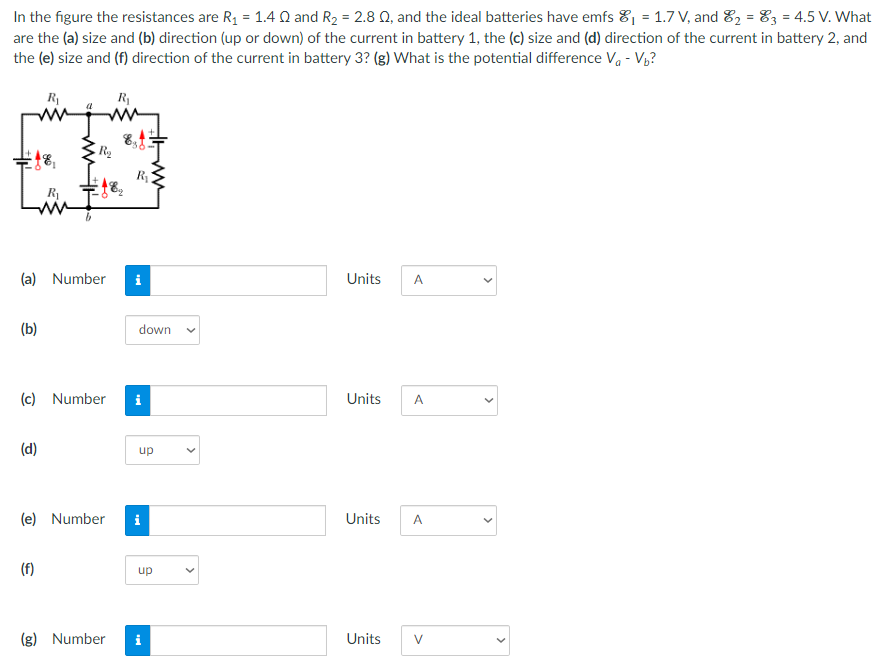In the figure the resistances are R1 = 1.4 Ω and R2 = 2.8 Ω, and the ideal batteries have emfs E1 = 1.7 V, and E2 = E3 = 4.5 V. What are the (a) size and (b) direction (up or down) of the current in battery 1, the (c) size and (d) direction of the current in battery 2, and the (e) size and (f) direction of the current in battery 3? (g) What is the potential difference Va−Vb? (a) Number Units (b) (c) Number Units (d) (e) Number Units (f) (g) Number Units
